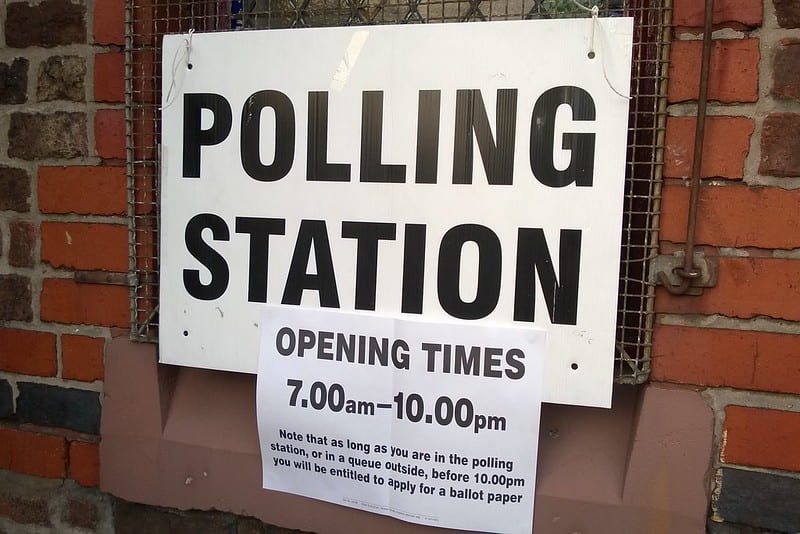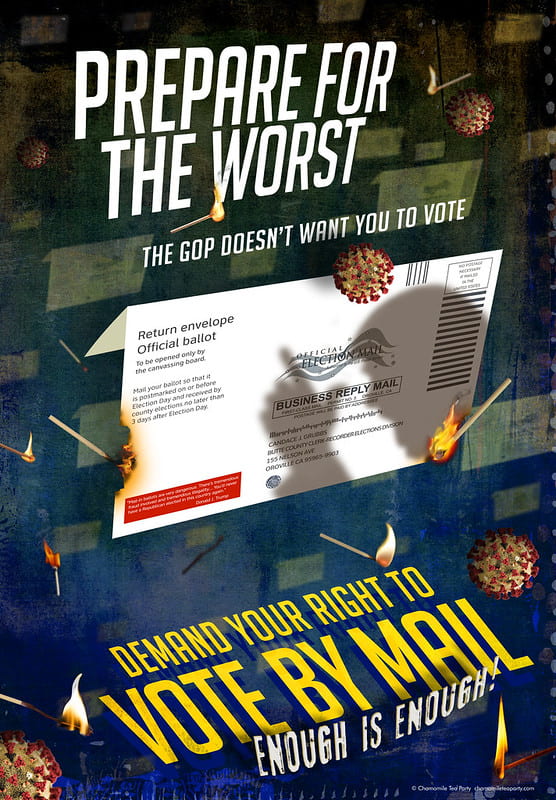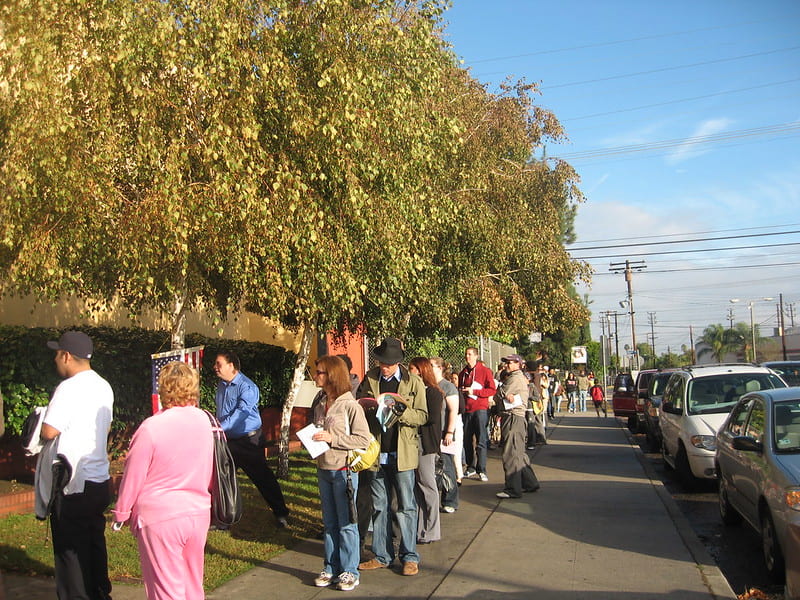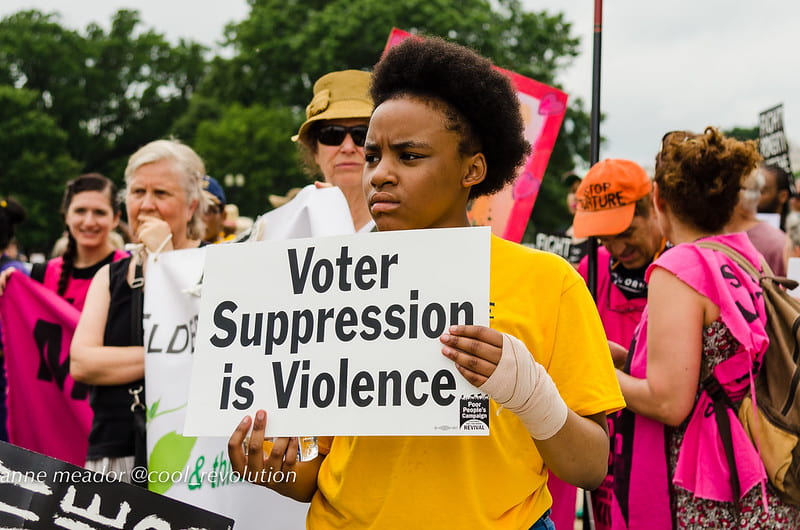
Ever since Joe Biden secured enough electoral college votes to be considered the President-Elect, the word “fraud” has been used in many capacities. Donald Trump and other prominent Republicans have been calling for recounts of the votes in many states, due to claims of voter fraud. The New York Times published an article where top election officials in all 50 states reported if they saw any evidence of fraud and none of them were able to report an issue. The only one that did not respond at all was Texas, where the Lieutenant Governor offered a $1 million reward for any form of evidence of fraud. In the 2016 election, Trump also claimed fraud occurred, even going so far as to appointing a commission for the 2016 election. This commission was unable to find any credible evidence for fraud. There have been instances throughout history of individual level voter fraud. There are even some cases of more organized instances of voter fraud such as in Chicago in 1982 and in Brooklyn in 1984. However, these cases were never to the extent that could swing a presidential election and since then jurisdictions have tightened their laws and technology surrounding voting has evolved.
With this have come many claims that mail in ballots could be the source of any possible voting fraud. While mail in ballots have always been used (think absentee ballots), there was a significant increase of usage this year due to the onset of the Covid-19 pandemic. In the last two federal presidential elections, nearly one in four Americans voted by using the mail in ballot system. There have been increases in voting by mail in ballots over the years and even with these increases, fraud rates have remained very, very small. There are many tools to address some very valid security concerns when it comes to mail in ballots. The primary method for determining and preventing mail in voter fraud is identity verification. Each voter is required to include personal identifying information such as their address, driver’s license number, or the last four digits of their Social Security number. This information is used to match the mail in ballot with the information stored on voter registration rolls. The signature on every ballot is matched with the corresponding signature on the voter registration record. Bar codes are also utilized to track ballot processing and help voters understand where their ballot is in the process. The bar codes are also used to help states identify any possible duplicate ballots. Similarly, ballot tracking programs allow the United States Postal Service to track a ballot from drop off to delivery. Anyone who commits voter fraud by using mail in ballots is considered a felon and could receive $10,000 in fines.

This current focus on alleged voter fraud completely disregards the systemic disenfranchisement of people of color within the United States, especially in regards to their right to vote. Despite non-Hispanic white people being a shrinking percentage of the United States, they have held tightly onto their political power through discriminatory practices that go back many centuries. In the 2020 election, this power was very clearly shrinking and more desperate attempts to hold on to it were made. These included slowing down the mail by taking away funding from the United States Postal Service, hurriedly appointing a Supreme Court justice, shutting down polling places in Black communities, refusing to count people of color in the 2020 census, calling for the election to be over before all of the ballots have been counted, and not allowing public schools and government agencies to discuss the long American history of disenfranchising non-white voters. In 2013, the Supreme Court ruled in the Shelby County v. Holder decision to remove the “preclearance” requirement. The preclearance requirement required states with a history of discrimination against non-white voters to get federal authorization for any changes they make to voting laws and rules. After the removal of this requirement, discrimination against BIPOC communities has persisted in many states, if not all.
One such state where we can clearly see the effects of the Shelby County v. Holder case is Georgia. In Georgia, the demographics have been rapidly changing and it has become a battleground state in elections over the past few years. Brian Kemp, the Republican Secretary of State of Georgia, worked hard to close polling places in Black communities, eliminate resources for election officials in Black communities, and removing people of color from voting lists. In Georgia counties like Fulton and Cobb that are becoming more and more diverse by the year, the wait time for voting was over 6 hours. The consolidation of polling locations due to the pandemic did contribute to the extended wait time. In some areas, Georgians waited for 11 hours to vote. In others, people waited in line and voted, all within 10 minutes. An analysis from Propublica found that within Georgia, predominately black precincts were more likely to have the longest wait times for voting even though those were the areas where a majority of new voter registrations occurred. It was largely due to these tactics that Stacy Abrams narrowly lost the Georgia governor race to Kemp. Since then, Abrams has been a champion for Black voters, pulling together one of the biggest voter registration campaigns in Georgia and in the United States. It is thanks to her hard work that Georgia flipped blue during the 2020 presidential race.

In 2018, Stacy Abrams began a large voter registration project in Georgia and it is to her effort that Biden owes his victory in Georgia. In the 2016 election, 500,000 black Americans voted in Georgia. In 2020, more than twice this number voted, making 1.2 million black voters in Georgia this year. Of all of the new voters in Georgia, registered after November 2018, half are black and 45% are under 30, two demographics that tend to vote bluer. Many other black women worked with Abrams to ensure this victory. Such advocates include Nsé Ufot, Helen Butler, Deborah Scott, and Tamieka Atkins. This is a long and mostly overlooked tradition of black women leading the charge for voting rights
Despite the adamant refusal to acknowledge the history of oppression of people of color by white people, these 2020 voter suppression tactics are reminiscent of the voter suppression measures used during the Jim Crow era. During this era, poll taxes, literacy tests, intimidation factors were used to keep Black and low income populations from voting. Now, officials in Florida require people convicted of a felony, primarily black men due to over policing, to pay all of their court fines and fees before allowing them to vote. Some states, including Texas, have determined that officials do not have to notify voters if their absentee ballot was rejected. Fake poll watchers are encouraged by the sitting President to intimidate voters. The claims of voter fraud largely aimed at black and Latino communities have not changed in the years between the Jim Crow era and 2020.This is not just a problem within the southern states, as it is often believed. Proof of voter oppression is found in New York, Connecticut, and New Hampshire along with many other states. When discussing voter fraud, it is important to discuss all of the injustices voters have faced this election cycle. The refusal to change current discriminatory policies and the persistent continuation of new voter suppression tactics show an inherent disregard for the rights of many communities. It is clear that no election changing voter fraud has occurred this election cycle, however the conversation remains centered around this subject instead of addressing the number of people of color who were unable to vote due to purposeful legislation created by largely white lawmakers.

